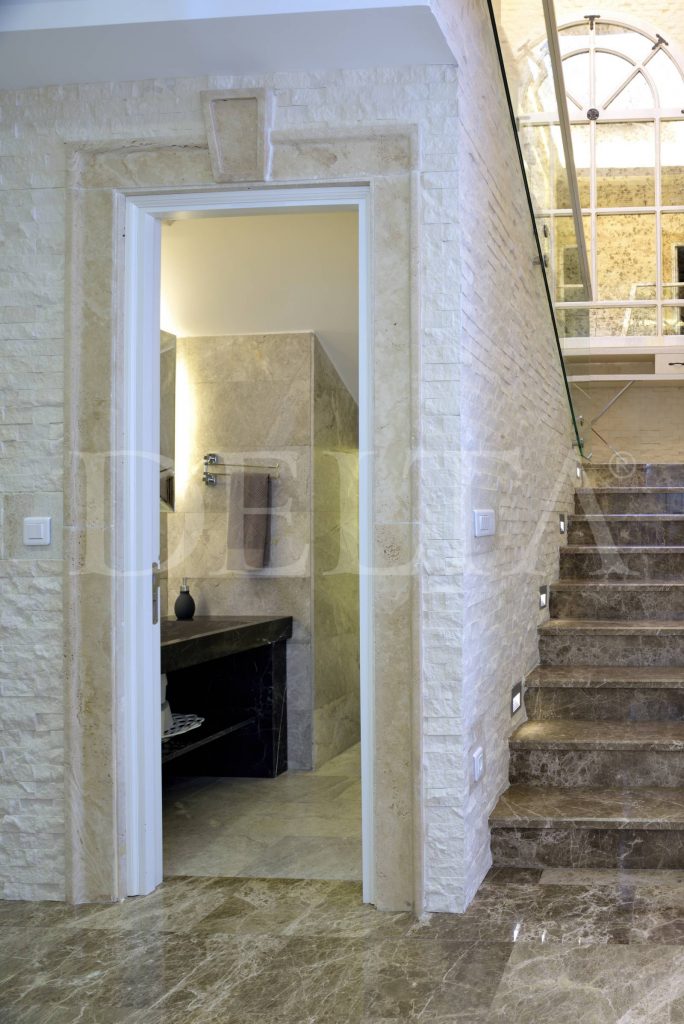Marble and Travertine are quite different. They have different characteristics like formation, appearance, area of usage, and cost.
Most of the time, people think that travertine is a variety of marble. In fact, travertine and marble are two distinct stones formed in totally different conditions. And they have their own look. Let’s take a glance at their key characteristics:
Formation
Marble is formed beneath the earth and travertine is formed above the ground near hot springs. Marble is formed when limestones are under high pressure. Travertine has many tiny holes and channels. This porous structure is created by the ejection of hot water and gases during the formation.

Appearance
You can distinguish marble from other stones by its hardness and veined patterns. You can see some marbles with a single colour, but we can see different colours with veins on it such as black with white veins. Some other colours are black, blue, green, and brown. The texture of marble is smooth, and it is produced with a satiny honed finish or high gloss polished finish.
On the other hand, travertine has a porous surface with a more natural and textured look. It is a rather soft and absorbent. For that reason, you need to apply a sealant to prevent debris from entering into the travertine.
Marble has a luxurious feel. It has veins in different colours. There are much more colour options with marble than travertine. Travertine has warmer colours like cream, soft beige, and gold. Marble is good at keeping cold while travertine doesn’t take the heat too much, this makes it ideal in outdoor spaces.
Area of Usage
Marble is used on floors, bathroom walls, and countertops. On the other hand, travertines are used on bathroom flooring, in kitchens, outdoor spaces, and for decorating walls, ceilings, and countertops.
Travertine has a porous surface that can be sealed or not depending on whether you want it to absorb water or have a more polished look. On the other hand, marble is always polished. Therefore, if you have an area outside, a travertine would be a good choice instead of the delicate marble. Marble will get scratched outside.
Cost
The cost of the travertine is nearly half of the marble. This makes it a great option for large-scale projects. Marble tile can be combined with other stones to make it cost-effective.
As you can see from the list, these two stones are quite different. After reviewing the key characteristics of marble and travertine, we can help you in selecting the best stone -whether it is marble or travertine- for your specific needs. Don’t hesitate to get in touch with us either by visiting our website or giving us a call. As Delta Marble, we will be more than happy to assist you with our expert team.



